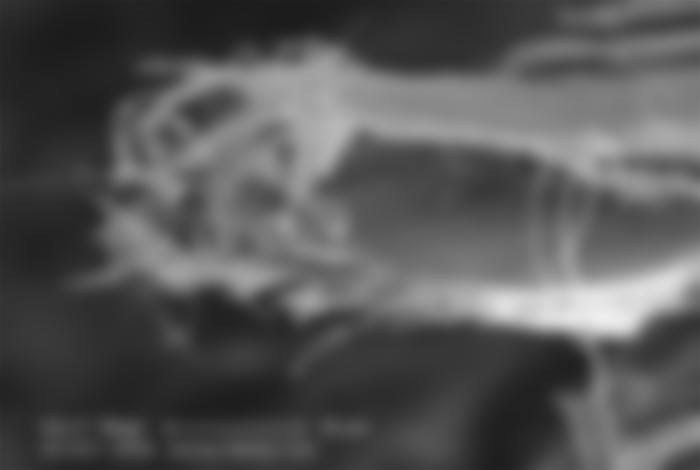The term asbestos is used to indicate the fibrous form of certain minerals that have been commercially exploited in the past for their peculiar physical-chemical characteristics. Asbestos is virtually indestructible: it resists fire and heat, chemical and biological agents, abrasion and wear. It is so flexible that it can be spun or woven and yet has very high tensile strength. It has sound-absorbingAsbestos (tremolite) capabilities and is a good electrical insulator. The minerals are in the form of elongated fibres.

CONFORMATION (Mineralogical configuration)
Serpentine
Chrysotile
Amphibole
Tremolite
Antofillite
Actinolite
Crocidolite
Chrysotile
The chrysotile, being curved, is more difficult to progress along the airways with the flow of the inhaled air and therefore to penetrate the interstice through the alveolar membranes.

Amphibole
Amphiboles, on the other hand, which have a straight shape, are more easily transported to the most extreme points of the respiratory tree.
THE FIBER
What has considered an asbestos fibre is actually an agglomerate of thousands of fibres which, when subjected to stress, can break down and release individual fibres. This peculiarity, if on the one hand, it imparts the typical characteristics of asbestos, on the other hand, it makes it dangerous because it is precisely the single fibres released that are responsible for known pathologies. These minerals also have the property of dividing themselves longitudinally into long and very thin fibres, improperly called fibrils, and this is the cause of their danger to health (unlike artificial fibres that fracture transversely). Asbestos fibre is 1300 times thinner than a human hair. There is no risk threshold below which the concentration of asbestos fibres in the air is not dangerous; theoretically, the inhalation of even a single fibre can cause mesothelioma, however, prolonged exposure over time or in high quantities increases the probability of contracting them exponentially.

Balangero Amiantiferous
The open-cast mine of Balangero, in the province of Turin, is the largest asbestos quarry in Europe. It came into operation in 1921 and was finally abandoned in 1995. In its 74 years of activity, it has produced almost 160,000 tons of asbestos fibre per year and has radically changed the landscape of the area: the construction of the quarry has involved the removal of over 45,000,000 cubic metres of rock and gravel. Today it is occupied by a lake basin about 50 metres deep and 400 metres wide. The steps that flank the quarry, about 10 metres high and 6 metres wide, bear witness to the extraction process: the rock was blown up with explosives and the material was then transported by truck to the crushing plants.
THE FIRST DOUBTS
In the United States, cases had increased sharply between the 1960s and the end of the 1980s, when massive exposure to asbestos, especially during the Second World War, came to the fore, especially among the workers in the shipyards where aircraft carriers and battleships were built.
DISPOSAL OF ASBESTOS
The use of asbestos has been outlawed in Italy since 1992. Law no. 257 of 1992, in addition to establishing terms and procedures for the disposal of activities related to the extraction and processing of asbestos, was also the first to deal with workers exposed to asbestos. Today Russia produces about half of the world's asbestos (about 1,000,000 tons per year). Following a ban by the European Community, Putin's Russia established a commission of experts to investigate the matter, but their work was resolved in 2002 with a protectionist (and definitive) defence of asbestos. Asbest is the world's largest open asbestos deposit, the quarry is 11 kilometres long and 320 metres deep.

THE GENESIS MESOTHELIOMA
The risk of contracting diseases is proportionate to the period of exposure to asbestos. Amphiboles (amosite, crocidolite) are more dangerous than chrysotile. Asbestos becomes dangerous if the matrix containing it is damaged, thus releasing the fibres into the environment. But how do the asbestos fibres that cause lung diseases penetrate the body? The fibres penetrate exclusively through the respiratory tract. The inner wall of the respiratory system is covered from the nose to the smallest bronchioles by ciliated cells. The mucociliary removal system is based on the movement of mucus caused by the motion of the eyelashes, extensions similar to the hair on the surface of some cells. All these lashes make a movement towards the pharynx, causing the layer of mucus above them to move in waves. Anything that ends up trapped in the mucus can thus reach a point where it can be spat on or ingested. The irritating action of cigarette smoke is also accompanied by specific damage to the hair cells of the respiratory tract; it is assumed that blocking their activity facilitates contact between the carcinogenic substances and the walls of the lung alveoli. Despite all these physical and mechanical defence systems, small particles regularly reach the alveoli in the deepest part of the lungs. There are no hair cells here and the irritating particles are attacked by alveolar macrophages. These particular white blood cells incorporate the particulate matter and remove it from the lungs by transporting it to the mucociliary system or transferring it to the intercellular spaces (from where foreign substances can be eliminated via the lymphatic system).
Asbestos dust
The asbestos fibres present in the air of inhabited areas mainly derive from the deterioration of products of human origin and partly from the crumbling of natural deposits. These fibres are extremely resistant and are not degraded by other compounds that may be present in the atmosphere; for these reasons, once released into the environment, they may remain there for decades.
Regulated fibres
Regulated fibres are defined as fibrous particles having the following dimensional characteristics: length greater than 5 microns, diameter less than 3 microns, elongation ratio (length/diameter) greater than 3.
PROTECTION OF WORKERS

Based on the above, we know that asbestos fibres are dangerous when they are breathed in and reach the pulmonary alveoli. It follows that to protect ourselves from these fibres, during removal and treatment, we must protect our airways with special personal protective equipment.







I have heard about asbestos before, but I don't have any idea how it was used. Thanks for the explanations here. Anyway, I heard about Johnson and Johnson's Baby Powder was finally removed from the US market as they contained asbestos. I heard it was also banned in Europe.